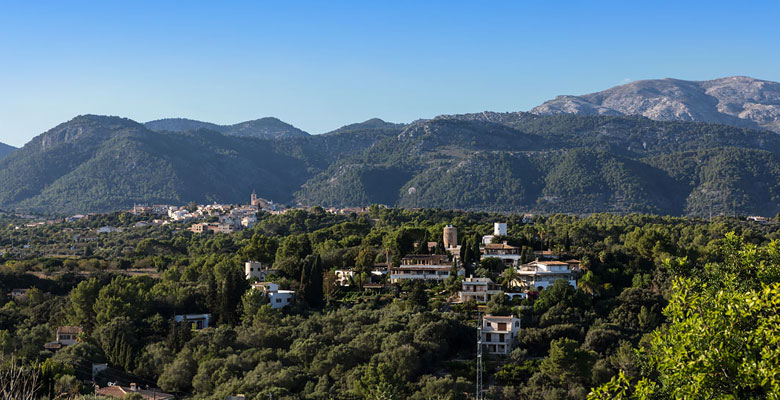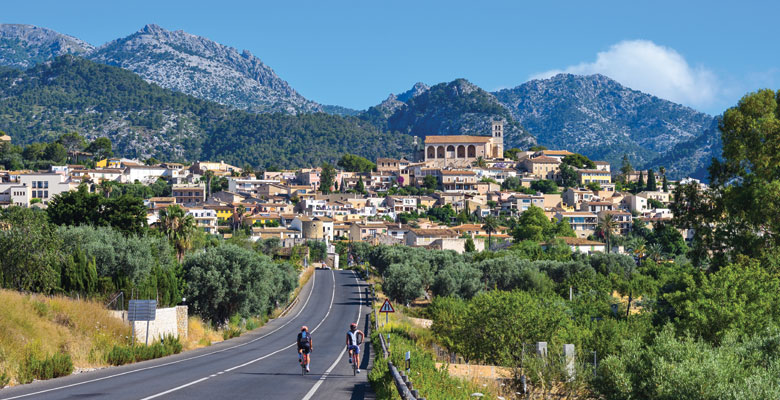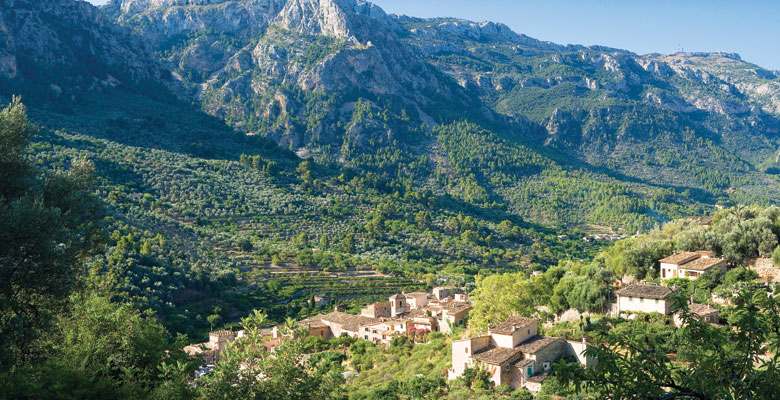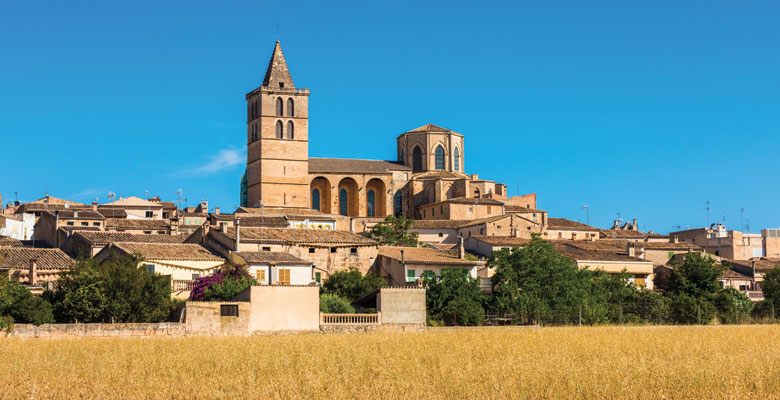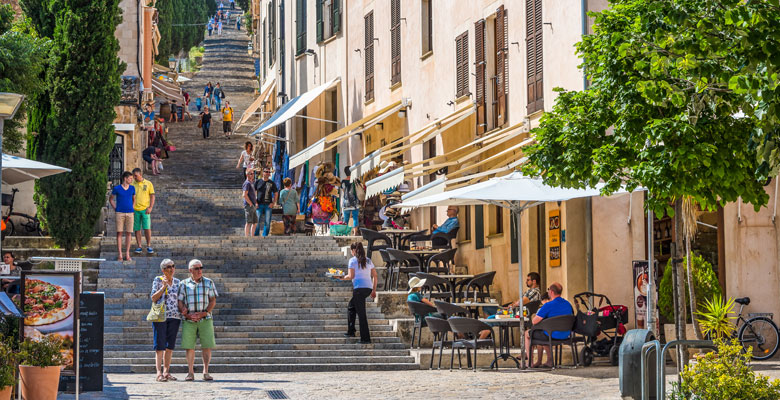Mallorca Villages
- By Ruth Lawrence
- 29 Mar 2018
- What to do

Always keen to show visitors less obvious places to explore, our Mallorca Operations Manager, Ruth Lawrence, chooses her favourite ‘pobles’ for traditional food, markets and a spot of shoe shopping.
Búger
Pronounced boo-hair in Spanish and boo-zhay in Mallorquin, this is Mallorca’s smallest municipality, with a population of less than 1,000 and a delightfully local feel. It sits on a little hill, with views to the Tramuntana Mountains and the Bay of Alcúdia. Búger is one of those lovely little places that thrives alongside tourism rather than because of it. The surrounding landscape reminds you of the island’s strong agricultural heritage, dotted with windmills and fragments of the ancient oak forests that would once have covered much of the countryside.
Best for: Living like a local.
We recommend: Ca La Tieta, a luxury converted village house in Búger with a private pool.
Selva
Nestled into the foothills of the Tramuntana Mountains, charming Selva is dominated by its 17th-century church in the middle of the main square. With the mountains behind and open countryside all around, the situation is delightful, and I recommend a beautiful circular walk from Selva to Caimari and back via the hamlets of Binibona and Moscari; it’s an almost entirely flat route, with options to pause for a drink in the various villages along the way. Spend a day in nearby Inca, and browse the many shoe stores, before lunch in one of the old wine cellar restaurants.
Best for: Country walks, mountain views.
We recommend: VIlla Empaltada, sleek, chic and very private, a 20-minute walk from Selva.
Fornalutx
In the mountainous west, you’ll find exquisite Fornalutx, with its tiny main square and narrow streets hiding small cafés, shops and a restaurant or two. Surrounded by citrus orchards and olive groves, this unique landscape is shaped by drystone walls and canals, and carefully protected as a UNESCO World Heritage Site. The views are superb, and I recommend arriving by midday so you can grab a table for lunch. To make a full day of it, nearby Deià, Sóller and Valdemossa are thriving little centres for music, art, gourmet foods and artisan crafts.
Best for: Historic landscapes.
We recommend: Ca’n Antuna, pretty and characterful in the heart of the village.
Sineu
If you plan on exploring Mallorca, you’ll almost certainly drive through Sineu, as it sits at the geographical heart of the island. Sineu hosts a busy, authentic market that takes over the town on a Wednesday morning. Arrive early to see the farmers bidding in the livestock market, then join them in sampling glistening olives, sniffing sun-warmed tomatoes and haggling for the best prices as they do their weekly food shop. The architecture around town is surprisingly grand, harking back to a golden era when Sineu was one of the most important towns on the island.
Best for: A traditional market experience.
We recommend: Ca Na Fustera, stylish and family friendly with a huge garden.
Pollença
Pollença town is one of my favourite places on the island. While it’s not exactly off the beaten track, it does have a genuine local flavour that you won’t find so easily on the coast. My suggestion is to make time to wander the maze of streets and enjoy Pollença’s celebrated café culture. Visit the excellent Pollença Museum and the Santo Domingo convent, which hosts classical concerts throughout July and August. For foodies, Pollença has everything you could want, from traditional pa amb oli to a Japanese-Mediterranean fusion restaurant.
Best for: People watching, eating out.
We recommend: Casita Amore, which is perfectly located next to Pollenca’s famous Calvary Steps.
